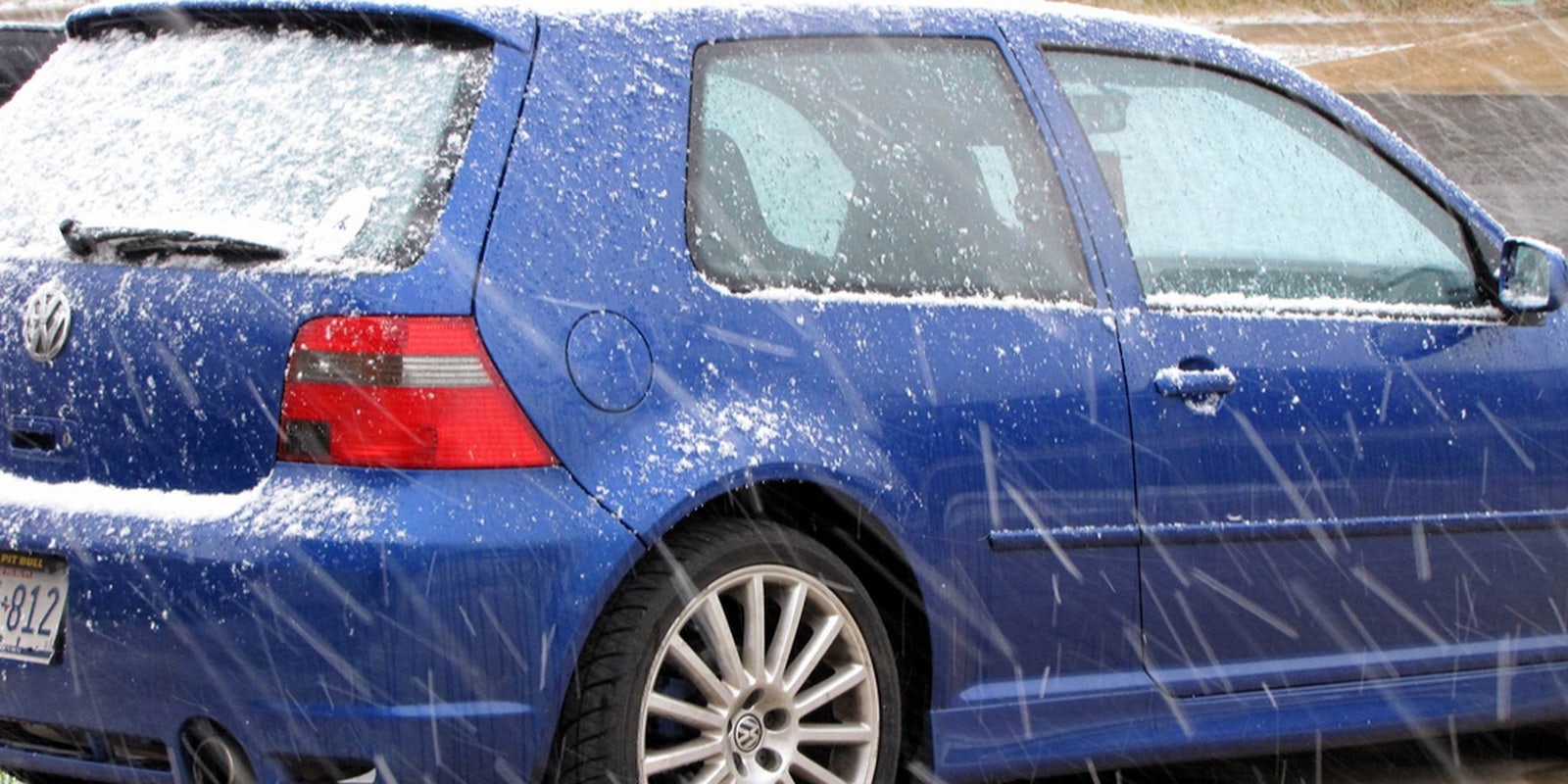A blizzard that threatens to break snowfall records is poised to hit the Northeast this week, and transportation—including the 4,000 cancelled flights—will be difficult.
During some storms, hailing an Uber can put a serious dent in your wallet, as “surge pricing”—the company’s price-raising scheme during periods of high demand—can climb as high as five times its normal price.
If Uber is to be believed, this won’t be a problem during late January’s Snowmageddon in New York City.
In July 2014, Uber struck a deal with the the office of New York Attorney General Eric T. Schneiderman and promised not to charge outrageous prices during states of emergencies and disasters. This promise covers snowstorms like the one that is set to dump several feet of snow on the city late Monday and early Tuesday.
Uber’s commitment to avoiding surge pricing only applies during official states of emergency. New York officially declared one, along with travel restrictions, so Uber prices will be going down there. But because demand will still be high and roads will still be treacherous, actually getting a car during the storm might be difficult.
Uber is also planning to donate to all of its revenue from rides during this snowstorm to the American Red Cross, which often assists with disaster relief after severe weather events. Last year, Uber promised to donate 20% of its total revenue from higher-priced rides during disasters and states of emergency to the Red Cross.
“Uber is committed to getting riders safely and reliably to where they need to be, and we urge everyone to use extra caution when out on the roadways today,” an Uber spokesperson said via email. “Per our national policy, during states of emergencies, dynamic pricing will be capped and all Uber proceeds will be donated to the American Red Cross to support relief efforts.”
To determine its “dynamic pricing,” Uber will cap the price of rides that excludes the three highest-priced, non-emergency days of the previous two months.
Though these efforts seem helpful to riders, the new snowstorm-pricing plans also offer Uber an opportunity to clean up its increasingly tarnished image. Surge pricing has always been a top complaint about Uber, and although the company says surge pricing helps encourage more people to drive, it often implements the scheme at unreasonable times.
Uber implemented surge pricing in November 2012 during Hurricane Sandy, and in December 2014, during Sydney’s hostage crisis, the company was charging up to four times its normal rates.
Some people are already anticipating increased pricing.
https://twitter.com/wmaxeddy/status/559731296269008896
https://twitter.com/rosavertov/status/559761122635821057
https://twitter.com/okarzay/status/559749488538288129
The ride-sharing service has received a slew of negative press in recent months, but this week’s snowstorm could give the company’s reputation a boost—if it sticks to its promises.
Photo by jasleen_kaur/Flickr (CC BY-SA 2.0)


